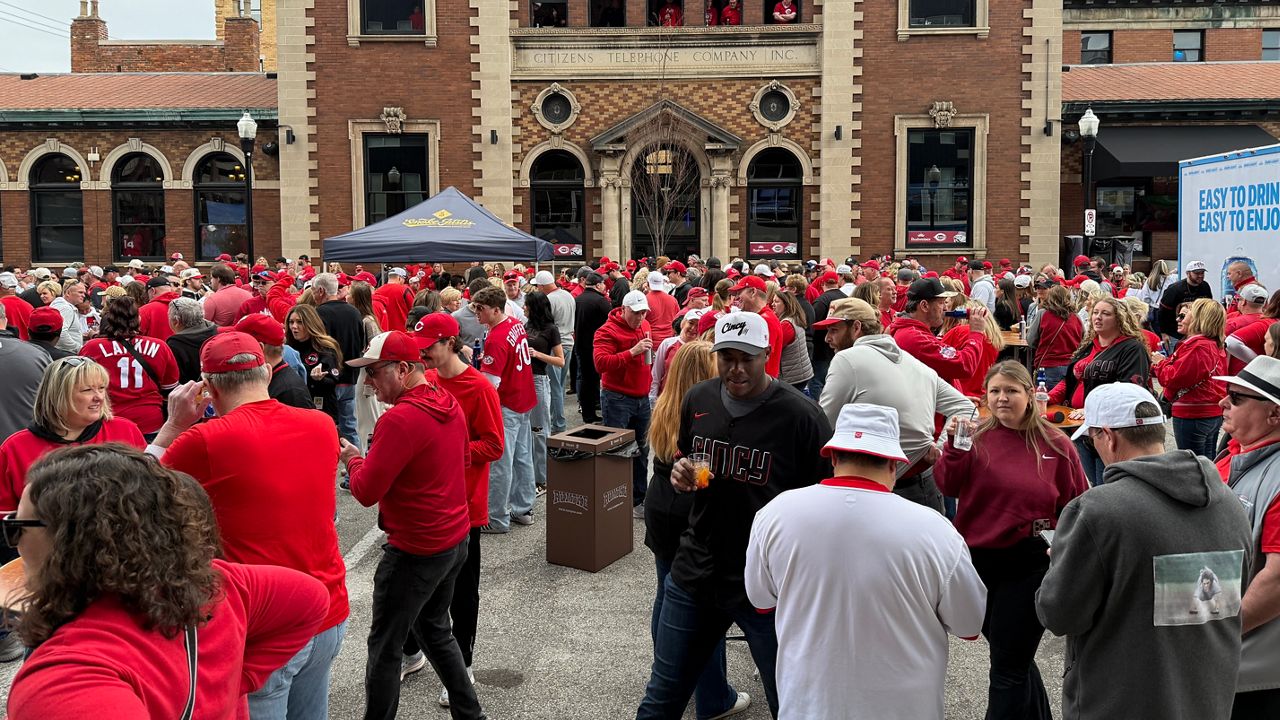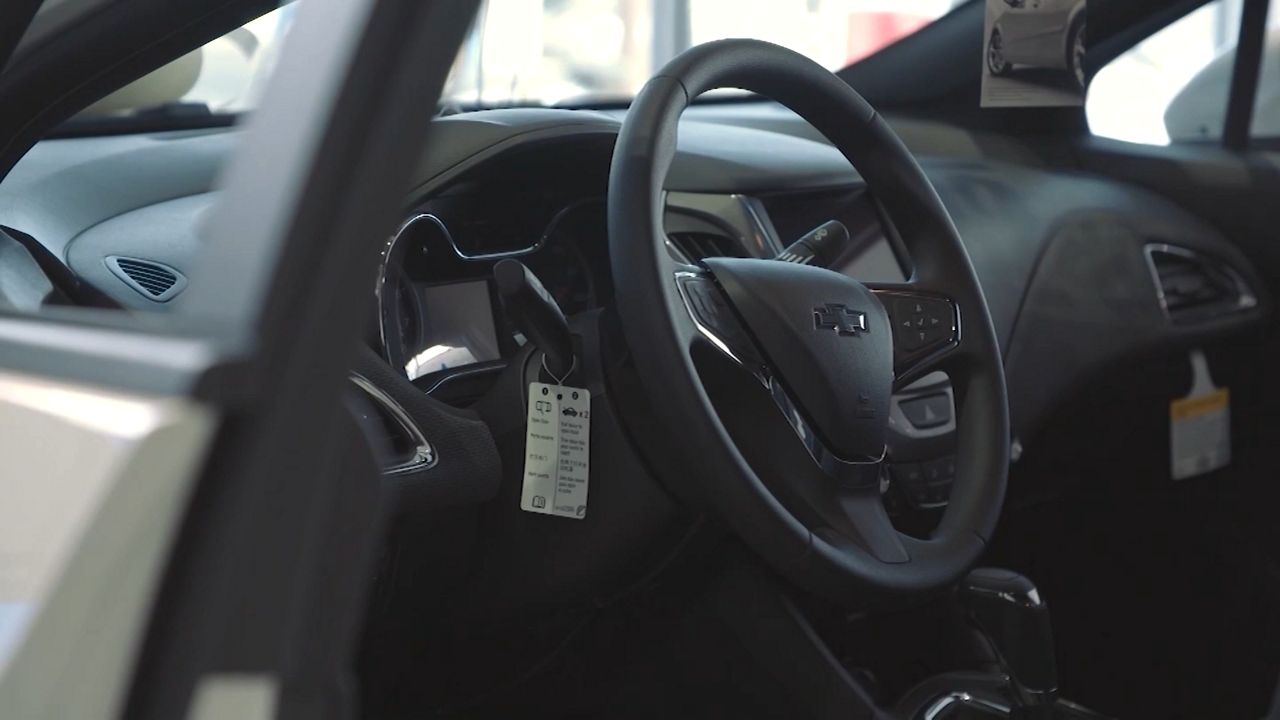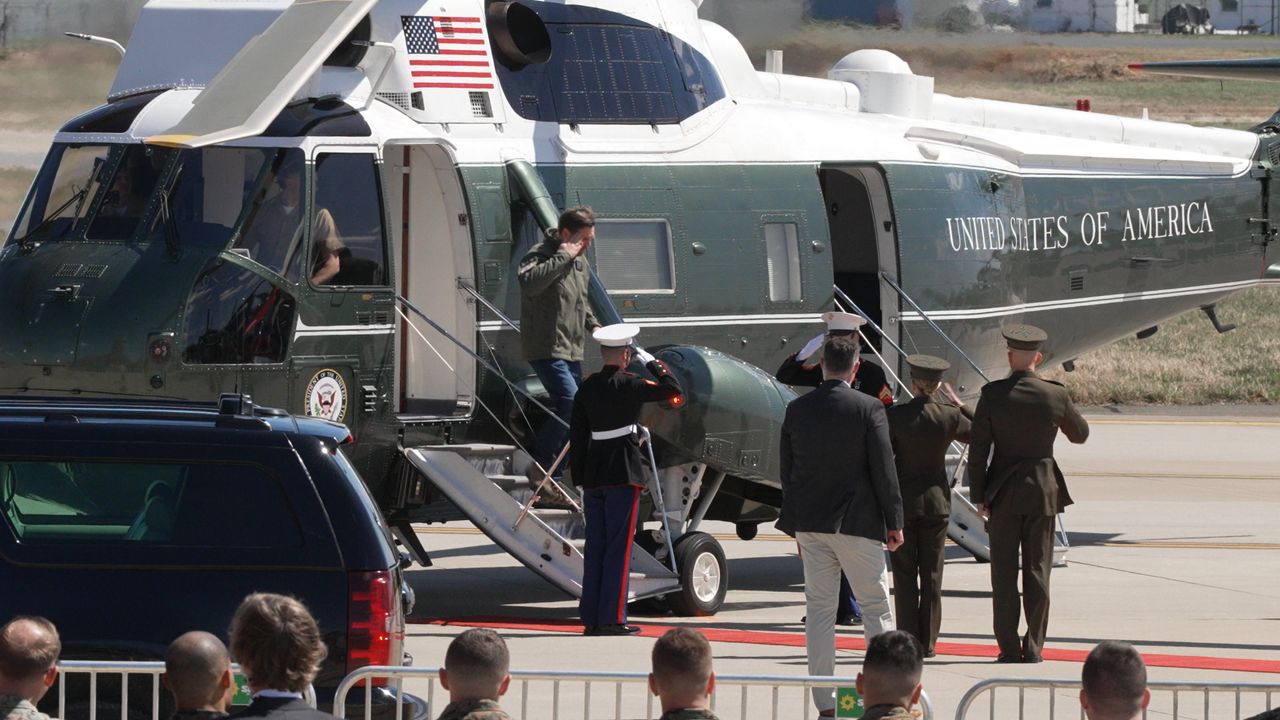CLEVELAND — The next phase of a roughly $150 million transformation project at the Cleveland Museum of Natural History is making its debut.
Each step through the museum’s new Visitor Hall fast-forwards guests millions of years, starting at the dawn of time. A timeline on the floor begins at the parking garage and travels through the more than 14,600 square-foot space, with every inch marking a million years in history.
“And you’ll see we’re not quite as important as we might think we are in this whole story,” said Cleveland Museum of Natural History President and CEO Sonia Winner.
Winner said that helps give guests some perspective about decisions that may impact the planet.
“Not only what we eat and what water we drink, and how we go to the grocery store,” she said. “But how we vote, how we think about natural history in a much broader way and how life is so connected.”
Natural light brightens the space with windows showing off plants and the environment that help bring beauty to the Northeast Ohio region.
“But we also want to showcase the future,” Winner said. “What does the future look like for our own health and the health of the planet?”
The first phase of the museum’s renovation opened to the public in December 2022 with the entire project on track to be completed by the end of next year, under budget and two years ahead of schedule. Winner says the museum is still seeking donors and fundraising for the last $20 million needed to finance the project.
The goal is to create a more interactive experience for guests, immersing them in both nature and history.
“You can’t tell the story, for example, of the moon rock, without telling the story that we’re all made of stardust,” Winner said.
The new Visitor Hall is also home to some of the museum’s most well-known exhibits, like Happy, the sauropod skeleton discovered by a museum team in 1954, back on display after a roughly $350,000 makeover.
“There are chemicals that were used when Happy originally came to the museum that are dangerous, and so what we did was we completely refurbished it to make it safe,” Winner said.
It’s the only known adult specimen of its kind, and the display now reflects recent research with changes to the head and tail positions.
“But, the interesting thing about Happy is we have a lot of the bones,” Winner said. “Many museums that you visit have casts, but this is the real thing.”
When the partial skeleton of Lucy was unearthed about 50 years ago by a team led by a former Cleveland Museum of Natural History curator, it was the oldest and most complete early human ancestor discovered.
“She helped us to understand a lot about our evolutionary history, how we started walking on two legs,” said Emma Finestone, assistant curator for the museum.
Lucy now stands near the courageous canine Balto, who led a sled team to deliver medicine to save an Alaskan town in 1919, before he himself was rescued by Clevelanders to enjoy retirement and beyond here in the city.
Earlier this year, scientists with the Zoonomia project shared results of tests on extracted DNA from the heroic husky’s skin to determine the traits that allowed him to survive in the intense blizzard conditions, discovering he was an “Alaskan husky” and more genetically diverse than modern breeds.
“It also showcases that diversity matters,” Winner said. “That all of us that are mutts, it’s survival of the species.”
In total, the museum’s home to more than 5 million objects, with about 80 percent of its collection tied to Ohio.
Winner said she wants to give everyone the chance to see each piece.
“All families, regardless of their income, should have access to science and to authentic information that’s happening to our planet and to our own health,” she said.
The Visitor Hall opens to the public Sunday and will be free for guests to visit daily.
Cleveland and East Cleveland residents can visit the entire museum for free on Sundays through the Jack, Joseph and Morton Mandel Foundation Community Days.










